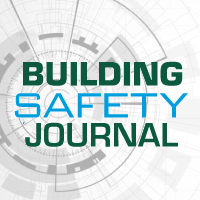
Plumbing code essentials: Backflow assemblies, devices and methods
![]() The 2018 Code Essentials series are available as valuable companions to the 2018 International Building, Residential, Fire, Energy Conservation, Existing Building and Plumbing Codes. Aimed at all user levels — including first-time users, veteran code users and other professionals such as architects, designers and contractors — these guides use a straight-forward, focused approach to explore code requirements with non-code language, allowing readers to gain confidence in their understanding of the material and build a solid foundation for learning and applying the code’s requirements.
The 2018 Code Essentials series are available as valuable companions to the 2018 International Building, Residential, Fire, Energy Conservation, Existing Building and Plumbing Codes. Aimed at all user levels — including first-time users, veteran code users and other professionals such as architects, designers and contractors — these guides use a straight-forward, focused approach to explore code requirements with non-code language, allowing readers to gain confidence in their understanding of the material and build a solid foundation for learning and applying the code’s requirements.
2018 Plumbing Code Essentials
The ultimate protection against backflow is to not have a connection between the potable water system and any source of contamination, and the best method for accomplishing that is to provide an air gap, which is a vertical separation between the outlet discharge from the potable system to the flood level rim of a fixture, reservoir, tank, etc. The physical air gap is basically two times the diameter of the effective opening, but in no case less than 1 inch. Some fixtures, appliances and products may have the air gap built-in with an air gap complying with ASME A112.1.2 or an air gap fitting complying with ASME A112.1.3. Where the product is listed as complying with either of these standards, it is considered to be code compliant.
Where it is necessary to connect appliances, fixtures, appurtenances and other systems, backflow protection must be provided by means of appropriate backflow assemblies, devices or methods. The different types of backflow preventers are listed in International Plumbing Code Table 608.1 along with the degree of hazard that they are equipped to handle. The applicable product standard for each is also identified in the table. According to the table footnotes, connection to something that contains what would be defined as contamination is deemed a high hazard, whereas substances defined as pollution are deemed a low hazard. This leads you to the applicable backflow preventer required for the backflow protection. Additionally, the application column in the table identifies whether the backflow preventer can be used for protection from backpressure or backsiphonage.
Whatever backflow preventer is used, it is imperative that it be installed in accordance with the code and the manufacturer’s installation instructions.
Click here to read the full Code Essentials excerpt.







